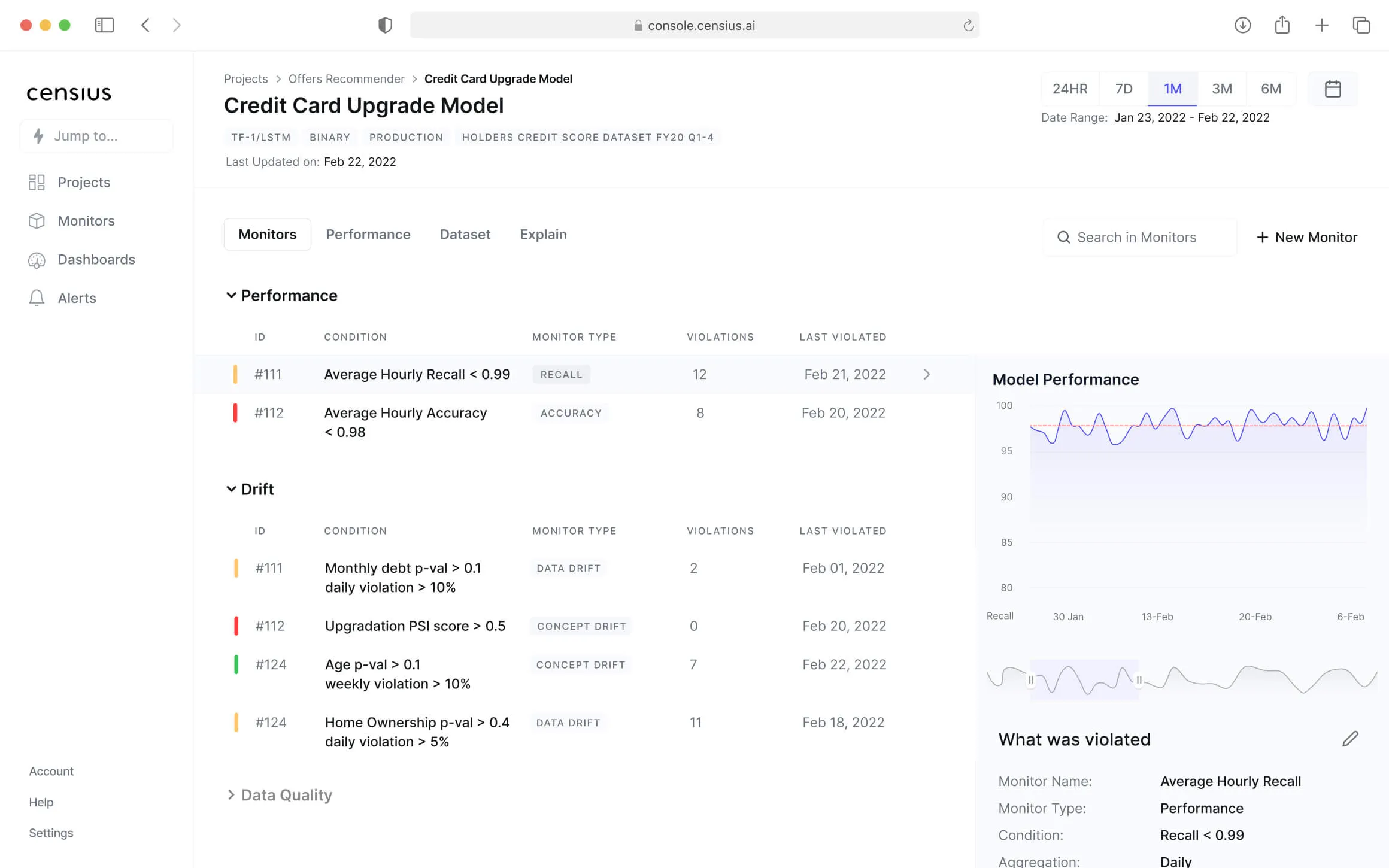One of the biggest problems in the machine learning (ML) space is models eventually regress - it is challenging to maintain high-performing AI solutions in the long winding journey from development to production, especially at scale. Keeping models performant calls for optimized collaboration between teams and continuous monitoring to enable long-lasting models and efficient automated pipelines. To help machine learning practitioners tackle these issues, Layer and Censius have come together to offer the best in machine learning observability and collaborative machine learning.
Layer helps you create production-grade ML pipelines with a seamless local-to-cloud transition. Once your data and model are loaded to Layer, you can easily train and retrain your model with Layer’s scalable fabric computing resources and track the story of how your model came to life with semantic versioning, extensive artifact logging, and dynamic reporting. Any pipeline created on Layer is easily shareable, downloadable, and editable by colleagues who want to reproduce your analysis. The beauty of using Layer is that you don’t need to change how or where your team programs - you just throw in a few lines of code in your existing analysis, and you can take advantage of Layer capabilities.
Censius is an AI Observability Platform that helps Data Scientists and ML Engineers to develop reliable AI models and confidently run them in production. It is built to monitor, explain, analyze, and debug models to help AI/ML teams to fix and serve models faster.
Censius flags issues such as poor data quality, model drift, dipping performance, and bias and offers a single platform to bring together production logs, input data, monitoring insights, and model details for root cause analysis (RCA). Other handy features include auto-initialized monitors, dashboards, custom metrics, segmentation tools, comparative views, and analysis widgets.
Layer and Censius
Layer and Censius have come together to offer the best in machine learning observability and collaborative machine learning. Here’s how the partnership will benefit you as a machine learning practitioner:
Model training
Layer provides free credits to enable you to train your machine learning models using remote GPUs and CPUs. At Layer, we call these environment fabrics. For instance, we offer data scientists 30 hours per week of free GPU to train their deep learning models.
You can also take advantage of existing datasets when building your projects.

Model monitoring
The Censius AI Observability Platform enables AI/ML practitioners to closely monitor their models to ensure consistent high performance and customer satisfaction.
In Production
- Monitor vitals such as data drift, concept drift, data quality, prediction bias, model performance, and much more to the precision of a minute.
- Maintain high performance by triggering recovery protocols after suspecting violations or potentially harmful patterns.
- Automate monitoring at scale and leverage auto-initialized monitors for a quick start.
- Send customized real-time alerts to unlimited users when monitors are triggered. Use preferred notification channels such as Slack or email.
- Collaborate across teams and share dashboards or violation reports with just a few clicks.
In development
- Imbibe monitoring insights from feedback loops with previous model versions.
- Pre-validate model predictions through drift, bias, & performance monitors.
- Develop go-to recovery pipelines based on RCA of recurrent issues.

Model explainability
Monitoring is only the beginning of AI Observability. To optimize the monitoring insights, it is essential to explain what triggered the violation in the first place and then work on uprooting the root cause. Censius Explainability helps data scientists and ML engineers to:
- Explain black box AI decisions to stakeholders and customers.
- Explain model violations both locally and globally by sorting feature impact, tracking relationships between key metrics, discovering outliers, and more.
- Compare model and data versions, data segments, baselines, features, and performance metrics to detect patterns and gaps.
- Use custom dashboards with analysis widgets to deep-dive into highlighted patterns.
- Create and share monitoring, and RCA reports across the stakeholder hierarchy.

Experiment tracking
What happens inside your model while training doesn’t have to be a black box. As your model runs, Layer allows you to log various artifacts such as images, charts, metrics, DataFrames, and model parameters. This report is generated every time your model is trained and helps you tell a story about your analysis and examine how that story evolves over time with your model.

Get Started with Layer and Censius
It’s now time to show you how Layer and Censius work together. You will need a Layer, and Censius account for this illustration.
Once you are done, check out this tutorial. It covers:
- Setting up a Layer and Censius project.
- Registering datasets to Layer and Censius.
- Training models on Layer.
- Registering models on Censius.
- Experiment tracking on Layer.
- Monitoring performance on Censius.
- Generating prediction using the Layer-trained model.
- Sending production logs to Censius.
Conclusion
Integrating Layer and Censius into your machine learning projects will ensure that they are reproducible and can be easily monitored. Censius will ensure that you can quickly dive into any problem to find root causes. At the same time, Layer ensures that your team works together collaboratively to build world-class machine learning projects.

Explore how Censius helps you monitor, analyze and explain your ML models
Explore Platform
